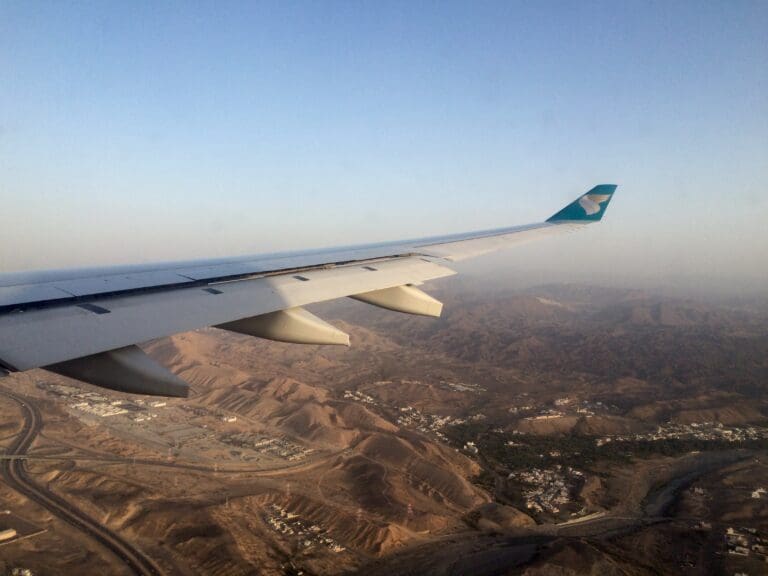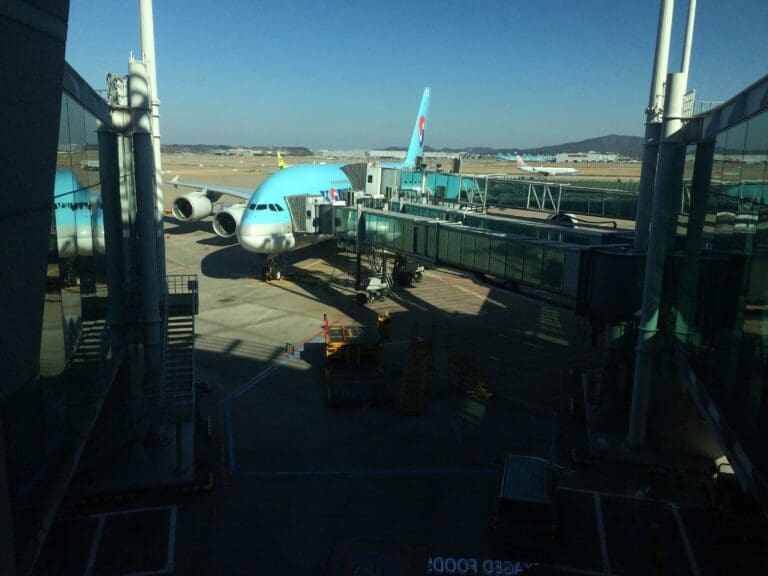Kunming to Lijiang with Tibet Airlines: A Unique A320 Experience

To skip to the flight click here!
Background
Having booked a bargain fare with China Eastern Airlines from Seoul Incheon to Kunming for a long weekend in Yunnan, I soon got to work planning my itinerary for my three days in the Land South of the Clouds. Famous for its peacocks, mountains, traditional towns and diverse ecology, I wanted to do some exploring away from the region’s capital. Unfortunately, despite being a keen hiker, my stay in the region would be far too short to explore any of Yunnan’s famous mountains. Following some deliberation, I decided to spend two nights in Kunming, before heading to the historic city of Lijiang, located around two hundred miles north of the capital.
Today, China’s famously expansive high speed rail network connects Kunming and Lijiang, and trains between the two take around three hours. However, back in 2017, overland public transport between the two was far more limited, with options consisting of either an intercity bus or a slow regional train. With one-way journeys by land taking between seven and ten hours, travelling on a tight schedule and wanting to maximise my time in Lijiang, I decided it was sensible to fly between the two. Fortunately, I found tickets for flights between Kunming and Lijiang to be comparatively cheap, and with the route being served by no fewer than six carriers, I had plenty of options. At the time of my trip in May 2017, this short hop was operated by Beijing Capital Airlines, China Eastern Airlines, China Southern Airlines, Kunming Airlines, Lucky Air or Tibet Airlines. As is often the case with regional services in China, in many cases, this hop was part of a longer one-stop itinerary.
As those who have flown domestically in China will known, if you lack Chinese language skills and a Chinese bank card, booking flights other than those operated for or on behalf of one of the country’s largest airlines is often an impossibility. Fortunately, most domestic flights can be purchased from around the world via the Chinese booking site Ctrip, and so this was my first port of call when planning this trip. Following a quick search, I was presented with a long list of flights between Kunming and Lijiang. At the top of these were services operated by Kunming Airlines, Lucky Air and Tibet Airlines.
Unlikely to visit Tibet any time soon, without hesitation I decided to fly with Tibet Airlines on the outbound leg, and owing to departure times, I opted to fly with Lucky Air rather than Kunming Airlines on the return. Following a quick payment process, I soon received my tickets for both carriers and was all ready to head off on an adventure to Lijiang.
About Tibet Airlines
Founded in March 2010, Tibet Airlines is one of China’s newer and, at least in the outside world, lesser-known carriers. Headquartered in Lhasa, the capital of the Tibet Autonomous Region, the carrier set out with the aim of boosting connectivity both within the region and between Tibet and other destinations across China. Whilst initially not backed by any operators, in March 2011, Air China took up a 31% stake in the new carrier and ultimately played a major role in supporting the commencement of operations and the airline’s subsequent growth. Needing an aircraft capable of operating in and out of Tibet’s multiple high-altitude airports, Tibet Airlines commenced operations with a fleet of brand-new Airbus A319 aircraft, with these later joined by six Airbus A320s and five Airbus A330 widebody aircraft. More recently, these have been joined by Airbus A319neos, with Tibet Airlines being one of just two scheduled commercial operators of the type, alongside China Eastern Airlines, who also ordered these with high-altitude operations in mind.
Unfortunately, for many overseas passport holders, visiting the Tibet Autonomous Region can prove to be a notoriously tricky and costly bureaucratic affair – this requires a special permit and a spot on an organised tour for the duration of your stay. Fortunately for aviation enthusiasts, passengers can sample the delights of Tibet Airlines without going anywhere near the region. Just like most Chinese airlines that are associated with a particular region, such as Jiangxi Air, Kunming Airlines and Shandong Airlines, just to name a few, Tibet Airlines operates services across the length and breadth of China. Additionally, for a time, the airline also operated a trio of international services. These connected Chengdu with the Thai island of Koh Samui and the Russian Black Sea city of Sochi, alongside a short-lived curious Airbus A330 operated link between Jinan in Shandong, and the Finnish capital, Helsinki. Outside of China, in cooperation with the Yeti Airlines Group, Tibet Airlines established Nepali Airbus A320 operator Himalaya Airlines, which currently operates between Kathmandu and destinations across China, the Middle East, South and Southeast Asia.
The Flight
Having touched down at Kunming Changshui International Airport from Seoul Incheon the previous evening, the first night of my short stay in Yunnan had not gone entirely to plan. Travelling on a budget, I had reserved and paid for a cheap hotel room on the fringes of the airport. However, with this hotel lacking any shuttle service between the airport and the hotel, I was required to take a taxi following my arrival. Once I had made it through immigration, I sped outside into the cool evening air and made my way to the line of official taxis. After showing my hotel’s address to the taxi driver who responded with an approving nod, we sped off into the dark night although unfortunately, we soon hit a wall of traffic on the main road out of the airport. As time passed, judging by their increased honking, the driver was becoming increasingly frustrated and after about fifteen minutes, they instead made their way to the airport’s on-site and comparatively expensive Best Yue Hang Hotel.
Seeing as I was rather tired, and with no way of reaching my pre-booked hotel, I decided to splurge on a night at the cheapest room at the airport. On the plus side, this hotel was unquestionably more luxurious than my original hotel, and my room came with a fairly decent Chinese breakfast spread. Following a restful night and a hearty breakfast, I repacked my bag and at 1000 I decided to head down to reception in order to check out. Once I had handed in my key card, I was advised that were I to wait twenty minutes, I could catch the complimentary shuttle to the airport. However, seeing as the terminal is an easy and pavemented ten-minute walk away from the hotel, and, lacking any heavy luggage, I decided to make this journey on foot.





From the hotel, I found the walk to the terminal to be well-signposted, and with the terminal almost right in front of me, it would have been difficult to get lost. From the outside, Kunming Airport’s sole terminal is rather impressive. This incorporates smooth, wave-like structures, with sections of glass that allow natural light to filter through. The sweeping roofline gives the terminal a futuristic feel, while the warm, earth-toned exterior pays homage to the local landscape. The façade is marked by metal and glass panels that create a sophisticated, clean look, blending contemporary design with subtle nods to the cultural and natural elements of Yunnan Province. During my walk to the terminal, I caught a good gander at a China Postal Airlines Boeing 757 Freighter, alongside a Kunming Airlines Boeing 737-700 resting at remote stands between flights.

After I had passed through what appeared to be a staff car park, I safety made it to the ground floor level of the terminal. As is usually the case at Chinese airports, once there, I was required to pass through a security check before I was free to wander around the terminal. Fortunately, with nothing other than a short queue and an army of staff on hand, I managed to pass through this in about a minute. Once inside the modern, spacious and cavernous arrivals lobby, I decided to check the arrivals board to examine the status of the inbound flight. Operating from Lanzhou to Kunming and back, with stops in Lijiang in both directions, despite the flight’s punctual departure from Lanzhou, I was more than aware of the above-average potential for the flight to be struck by an air traffic control delay on its way down to Kunming. Fortunately, the inbound flight was still down to arrive on time in Kunming and so I happily continued up the escalators to the terminal’s check-in hall.
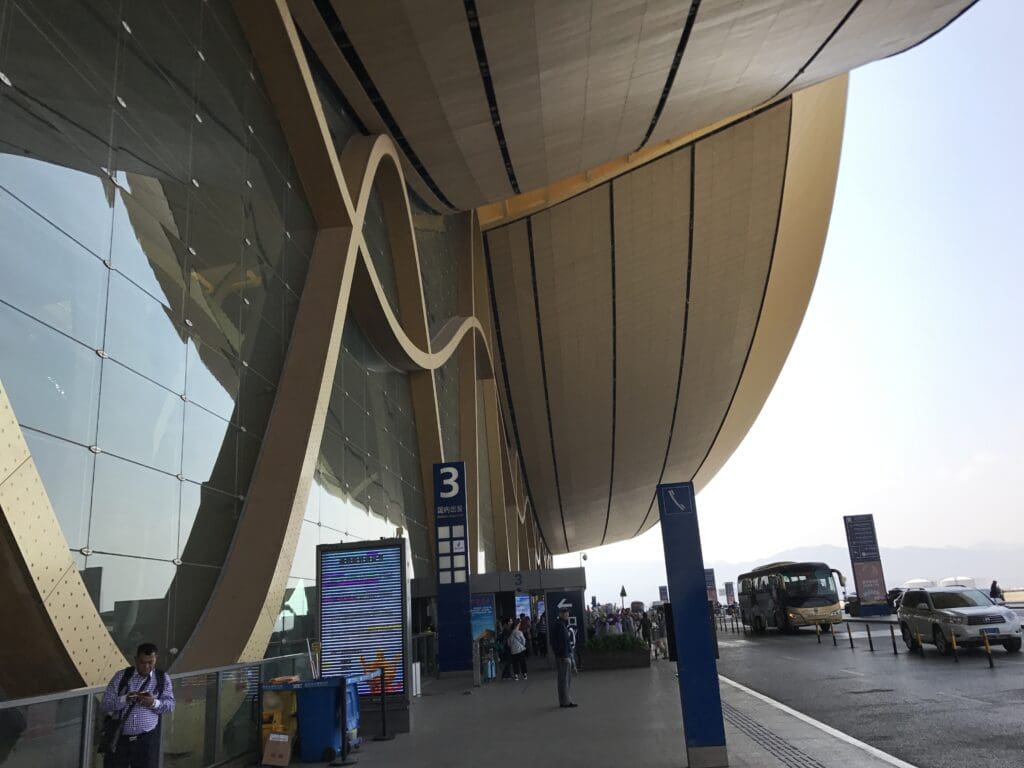
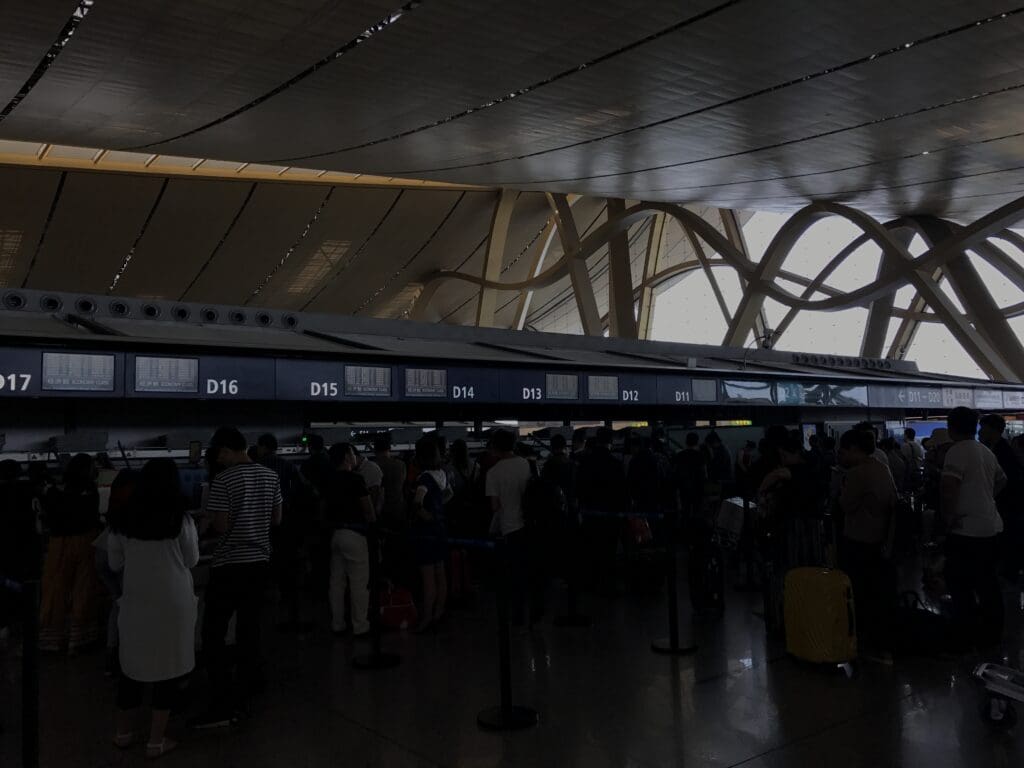
That morning, the check-in hall was a hubbub of activity, with endless crowds of passengers checking in for their flights to cities across China alongside a handful of destinations abroad. Looking around, those flying with China Eastern Airlines appeared to be afforded the luxury of utilising the airline’s dedicated check-in area, whilst a single common check-in area was in place for those departing on all other airlines. Despite not travelling with any hold luggage, as is usually the case when flying domestically in China, I had been unable to check-in online and was thus left with no choice other than to join one of the long snaking queues leading up to the check-in desks. Whilst this was an inconvenience, having given myself plenty of time, I was in no panicked rush, and much to my delight, the queue shifted along at a reasonable tempo. Twenty minutes later, I reached the front of hte queue where I handed over my booking confirmation and passport and requested a window seat. During this interaction, the rather cold and stony-faced agent did not mutter a word and remained totally silent as they handed me a Yunnan Airport Group branded boarding pass. Fortunately, my request had gotten through and this revealed that I had been assigned Seat 7F for the short hop up to Lijiang.
With my boarding pass in hand, I made a beeline for security. There, I soon found myself in another queue and, after ten minutes of waiting, I had my boarding pass scanned and passport checked before I was free to enter the security area. Following a typically thorough check, I was finally free to explore the delights of Kunming Airport’s modern and massive airside departures area. Despite not being my first time visiting this terminal, having previously been in a rush whilst passing this, I was pleased to find that I had plenty of time to explore the terminal’s nooks and crannies. Being one of the largest regional airports in China, given its size, unsurprisingly there are plenty of shops, cafés and restaurants on offer for those looking to partake in some retail therapy or grab something to eat or drink.

Wandering around, I found the terminal to be spotlessly clean and well-polished, with plenty of cleaners visible hard at work for the duration of my stay. Despite this, I should mention that I found the toilets to be in an atrociously poor state. Turning to other complaints, just like at most Chinese airports bar Beijing Capital and Shanghai Pudong, only those holding a Chinese phone number could connect to the terminal’s complimentary wifi network. Seeing as I was just visiting for the weekend, I lacked this and thus had to remain incommunicado with the outside world for the duration of my stay.


Seeing as I was still full from my hearty Chinese breakfast, following a wander around, I plonked myself down near one of the large floor-to-ceiling glass windows and watched the near-constant stream of movements outside. With Kunming serving as a hub for China Eastern Airlines, Kunming Airlines, Lucky Air and Ruili Airlines, aircraft operated by these four airlines made up a significant portion of the movements that day. However, I also managed to spot aircraft from the likes of Air China, Chengdu Airlines, China Postal Airlines, China Southern Airlines, China West Air, Hainan Airlines, Hongtu Airlines, SF Cargo Airlines, Sichuan Airlines, Shanghai Airlines, Shenzhen Airlines, Spring Airlines, Tianjin Airlines and Xiamen Air. Meanwhile, aircraft from HK Express, Lao Airlines and Thai AirAsia could be seen at the terminal’s international stands. Needless to say, for an aviation enthusiast, Kunming most certainly did not disappoint!
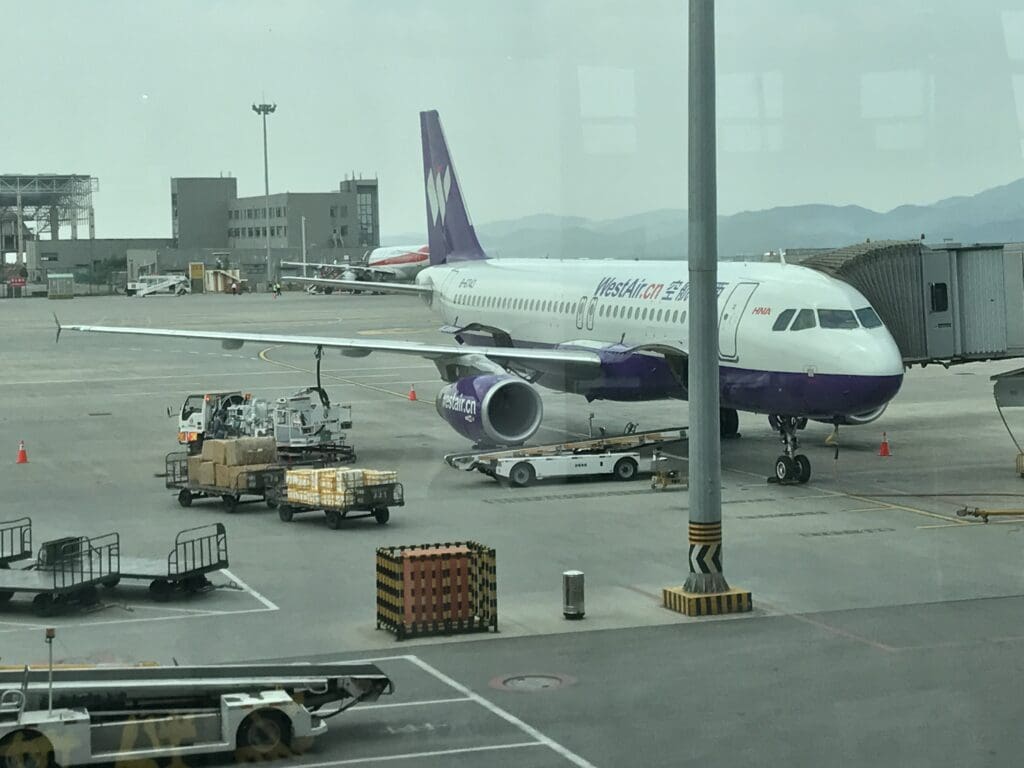

Eventually, I wandered over to Gate 25 in preparation for the arrival of the Airbus A320 from Lijiang. However a few minutes after sitting down there, I was a little surprised to see a pink and white Ruili Airlines Boeing 737-700 pull into the stand following its flight from Xi’an! Around ten minutes later, the only Tibet Airlines aircraft in Kunming at the time touched down and made its way to Gate 1, indicating that there had been a gate change. Despite there not being any announcements made regarding this, the departure boards had updated and amended the flight’s departure gate from Gate 25 to Gate 1, and so I wandered over to this. Despite this initial hiccup, I was very pleased to find that Gate 1 was perhaps one of the best gates in the terminal for taking photographs of the aircraft waiting on the stand outside, allowing for full fuselage shots of the then brand-new, sharklet-fitted Airbus A320.


That afternoon, I would have the pleasure of flying onboard Airbus A320-214 B-8843. Manufactured at Airbus’ Chinese plant in Tianjin, this would be my second time flying onboard a Chinese-built Airbus. Making its first flight in April 2014, the aircraft had been delivered to Tibet Airlines just fifteen days before my flight! This made it one of the youngest aircraft that I have ever flown. In the week before my flight, this Airbus had undertaken a total of 39 sectors, travelling over 27,000 miles and visiting the likes of Chengdu, Guiyang, Harbin, Hefei, Kunming, Lanzhou, Lijiang, Shenyang, Taiyuan, Wanxian and Yantai.

By the time I arrived at the gate, the area around this was already packed. However, as it turned out, virtually all passengers there were bound for the Western Yunnan city of Mangshi on Ruili Airlines. Soon, a ground agent wandered through the gate area presumably advising passengers in Mandarin that there had been a gate change. Meanwhile, after a few minutes, passengers bound for Lijiang and Kunming arrived.

Once those who had flown in on the Tibet Airlines Airbus had disembarked, several crew members entered the terminal to stretch their legs and purchase some refreshments before returning to the aircraft a few minutes later. A short time after the crew had returned to the aircraft, the gate staff performed an announcement requesting those bound for Lanzhou and Lijiang to board the aircraft in Mandarin and English, with this announced in no particular order.
Wanting to maximise my time onboard what was for me, a unique airline, I soon joined the orderly queue of passengers before having my boarding pass scanned. After a few steps, this was then re-checked by a security guard who was presumably responsible for double-checking that passengers were boarding the correct aircraft. Once I had received the all-clear, I continued heading down the jetbridge and soon arrived at the L1 door of the Airbus A320. Unfortunately, the majority of Kunming Airport’s jetbridges are covered in promotion wrapping and vinyl stickers that prevent passengers from getting a good look at their aircraft as they board.



Following a short queue, I stepped into the Airbus’ forward galley and passed over the ‘Welcome Aboard’ rug which appeared to be identical to those that I had previously seen onboard China Eastern Airlines’ aircraft. As I entered the galley, I received a rather quiet and subdued ‘hello’ from one of the cabin crew members donned in Tibet Airlines’ bright red uniform. Given the length of the flight, there would be no service onboard and I was instead handed a bottle of 5100 Tibetan Spring Water. I later discovered this to be a rather premium brand sold for 20 Yuan per bottle in Lijiang!

Like most Chinese carriers, Tibet Airlines features a Business Class cabin, although I was incredibly surprised to see that the seats in this were in a 3-3 configuration, making it the first ‘Euro-biz’ style Business cabin that I have ever encountered in Asia! This consisted of two rows of seats, each of which was covered in a dark red fabric. In Economy, each seat was covered in a blue fabric adorned by a subtle vertical wave pattern and topped with a white fabric antimacassar that featured Tibet Airlines’ logo, contact number and website address. Somewhat unusually for a Chinese narrowbody, the interior lacked any advertisements, giving an arguably classier feel than the China Eastern Airlines and China Southern Airlines aircraft that I had flown in the months leading up to this trip.

Seated near the front of the aircraft, I soon plonked myself down and was delighted to find the seat to be well-padded, soft and comfortable, although admittedly the legroom offered was not quite five-star and seemed to be a little more cramped than the likes of other Chinese full service carriers. Importantly, the cabin appeared to have been thoroughly cleaned during its turnaround and I failed to spot any signs of rubbish or crumbs from previous passengers as I examined the area around my seat, other than a stain on the headrest cover of the seat in front of mine. Turning to the seatback pocket, this contained a safety card, a sick bag and a copy of Tibet Airlines’ inflight magazine. Perhaps unsurprisingly given the likely lack of non-Chinese speaking foreigners who end up flying with the airline, I found this magazine to only be published in Chinese.

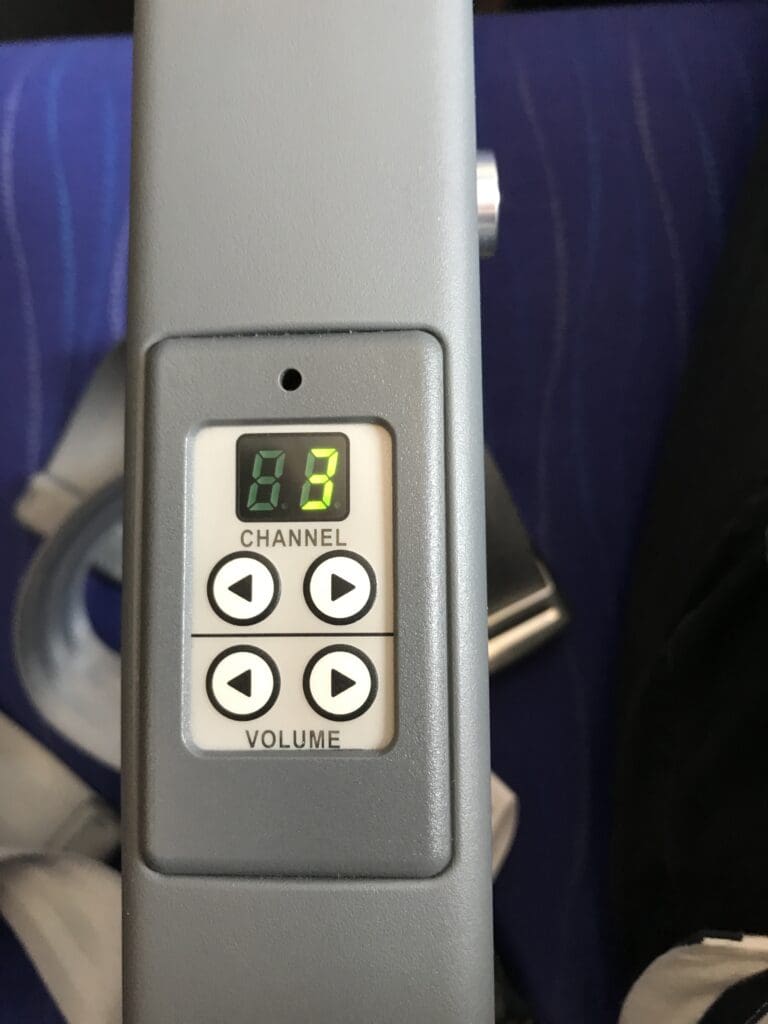




Turning my attention outside, once I had taken my seat, it appeared that the loading of passengers’ bags had only just commenced. Meanwhile, as passengers boarded, the already warm cabin seemed to be getting noticeably warmer by the minute, creating a rather uncomfortable atmosphere. By 1310, all passengers had made their way onto the aircraft and, as far as I could see, the flight appeared to be totally full. Focusing on demographics, I appeared to be the only non-Chinese passenger onboard whilst most, like me, were leisure travellers heading to Lijiang. Turning to the crew, those in the cabin consisted of a team of four flight attendants as well as a uniformed security guard armed with a body camera who patrolled the aisles after boarding had been completed perhaps on the lookout for potential troublemakers. Once all were in their seats, a selection of Chinese language newspapers were handed out alongside blankets and pillows. Just before the aircraft commenced its pushback, a pre-recorded welcome announcement and a warning against using electronics inflight was made in Mandarin, Tibetan and English, after this, the overhead screens dropped down and a Tibetan Airlines’ safety video was broadcast in Mandarin and English, accompanied by Tibetan subtitles.

At 1312 the aircraft was pushed back from its parking position and the safety video was interrupted by the Purser’s welcome announcement, undertaken in Mandarin and broken English. As soon as the aircraft came to a halt, the aircraft’s two CFMI CFM56-5B4/P engines hummed into life and no more than two minutes later, the aircraft gently powered forward under its own steam and commenced its short taxi to the end of Runway 21. From my seat, I was offered a good view of the terminal as we made our way away from this, followed by a long line of airlines, with these operated by Lucky Air, Kunming Airlines and Sichuan Airlines. In addition, a single Airbus Corporate Jet and an Airbus A321 operated by little known Hongtu Airlines could also be seen resting in between flights.
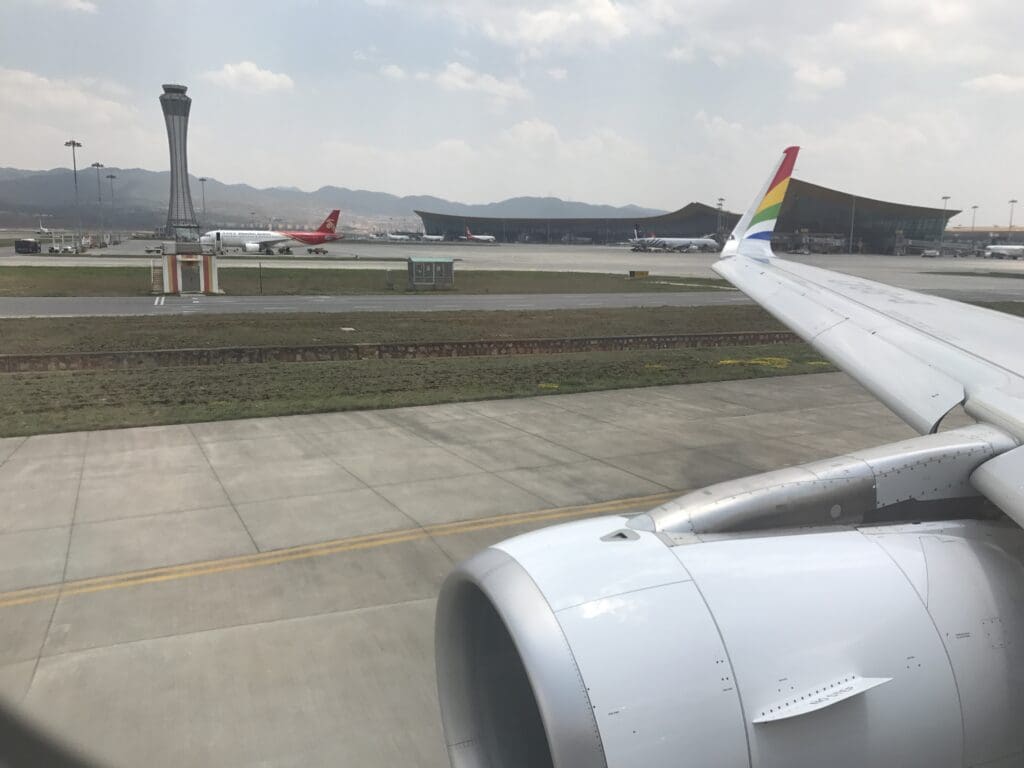

At 1323 the aircraft reached the end of the runway and I managed to spot several spotters eagerly admiring our departing Airbus A320. Once there, without delay, the Airbus taxied straight onto the runway and commenced its powerful take-off roll. Following what seemed like a matter of seconds, the aircraft made a sporty rotation, contrasting with what seemed like a rather shallow climb into the skies over Kunming.



Outside, during the first few minutes of the flight, a large quarry could be seen before the aircraft passed over the centre of Kunming where it rose up into the clouds. At this point, the screens were extended once more and broadcast the moving map. This displayed a route that would take us directly west to the city of Dali before making a 90-degree turn to the north and flying straight to Lijiang.


Looking outside, whilst Yunnan is renowned for its impressive mountainous scenery, unfortunately, the clouds below meant that little of this could be seen during the flight. Inside the cabin, once the aircraft levelled off, one of the flight attendants made a quick walk through the cabin checking that all was in order, however aside from this, the crew remained firmly strapped into their seats for most of the flight. Thanks to the fact that the curtain separating Economy from Business remained open, I was able to see that perhaps disappointingly for those passengers up front, no inflight service was offered. Meanwhile, looking around, it appeared that most passengers had succumbed to the warm cabin and had drifted off to sleep.
Several minutes after the aircraft levelled off, the Airbus could be felt commencing its descent which was confirmed moments later when a pre-arrival announcement was undertaken by one of the crew members. This contained the usual universal requests regarding window shades, seatbacks, tray tables and seat belts before ending with a word of thanks for flying with Tibet Airlines. Eager to secure the cabin, as soon as this was made several crew members passed through the cabin checking all was secure which was followed by another examination of the passengers by the onboard security guard.
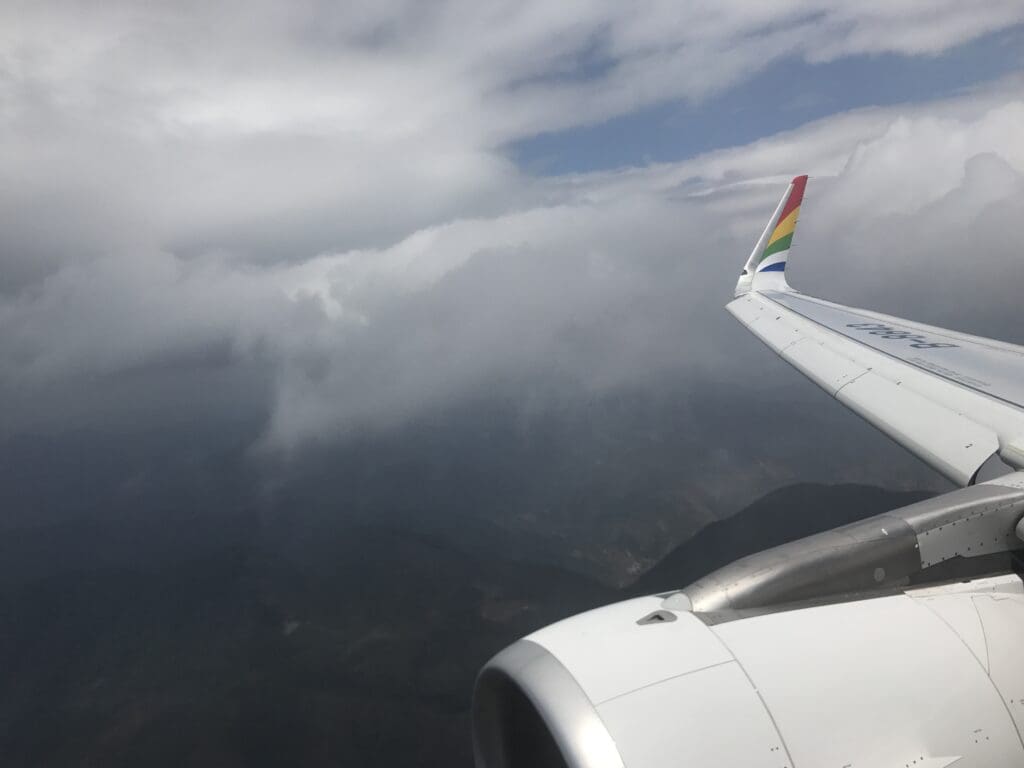

Following a quick but turbulent journey through the clouds, I was greeted by a fantastic view of Yunnan’s mountains alongside the blue waters of Chengai Lake as the aircraft continued to fly north. Upon reaching the centre of Lijiang, the aircraft banked to line us up with the airport’s Runway 23 and a short time later mountains rose up on either side of the aircraft as we found ourselves entering the valley that is home to the city’s airport.






Beneath the aircraft, a number of small villages and farms whizzed past. Sitting near the front of the aircraft, as we neared the airport I heard the sound of the autopilot disconnecting and several moments later the Airbus made an incredibly smooth touchdown on the runway at 1420. Despite the barely noticeable touchdown, the aircraft’s return to earth was followed by some harsh braking before the aircraft taxied left, exiting the runway. A very short time later, Lijiang Sanyi Airport’s unique traditional-style terminal came into view where a trio of aircraft could be seen preparing to head off across China. These consisted of a China Eastern Airlines Boeing 737-700, a colourful Loong Air Airbus A320 and a Shandong Airlines Boeing 737-800.




Far from being China’s largest airport, the taxi to the gate took almost no time whatsoever and before I knew it my first flight with Tibet Airlines had reached its end. Once the two engines had powered down, the jetbridge was connected quickly and, seeing as I was seated near the front of the aircraft, once disembarkation commenced I ended up being amongst the first twenty or so passengers to exit the aircraft. Upon reaching the forward galley, I thanked the two flight attendants standing there before stepping off the aircraft and making my way up into Lijiang Airport’s rather uniquely designed terminal, which takes clear inspiration from some of the local traditional architecture. With all passengers required to disembark in Lijiang, upon making it to the top of the jetbridge an airport staff member could be seen holding a sign and ushering those passengers continuing onwards to Lanzhou back into the airside departure area. However, as with most passengers, I continued down the airport’s partially open-air walkway and soon found myself in the baggage collection hall. With no bags to collect, I was able to head straight through this hall and into the landside arrivals area where I shimmied past the scrum of drivers eager to find their fare and walked with determination to the bus stop from where I would take the airport shuttle into the city.






Summary
Whilst I only experienced a short hop with Tibet Airlines, this ultimately left me with no complaints. Once onboard, I found the crew to be acceptably polite, whilst I was pleased with the bottled water, blankets, pillows and newspapers that were handed out. Meanwhile, the seats were spacious and comfortable enough, and I would have had no issues sitting in these on a longer flight across China. Thus, with all things considered, I would not hesitate to fly with Tibet Airlines again at some point in the future.



